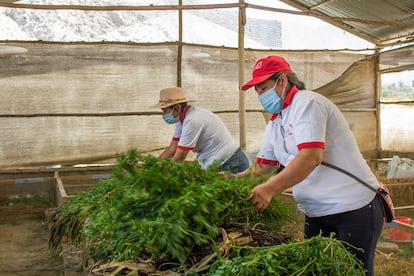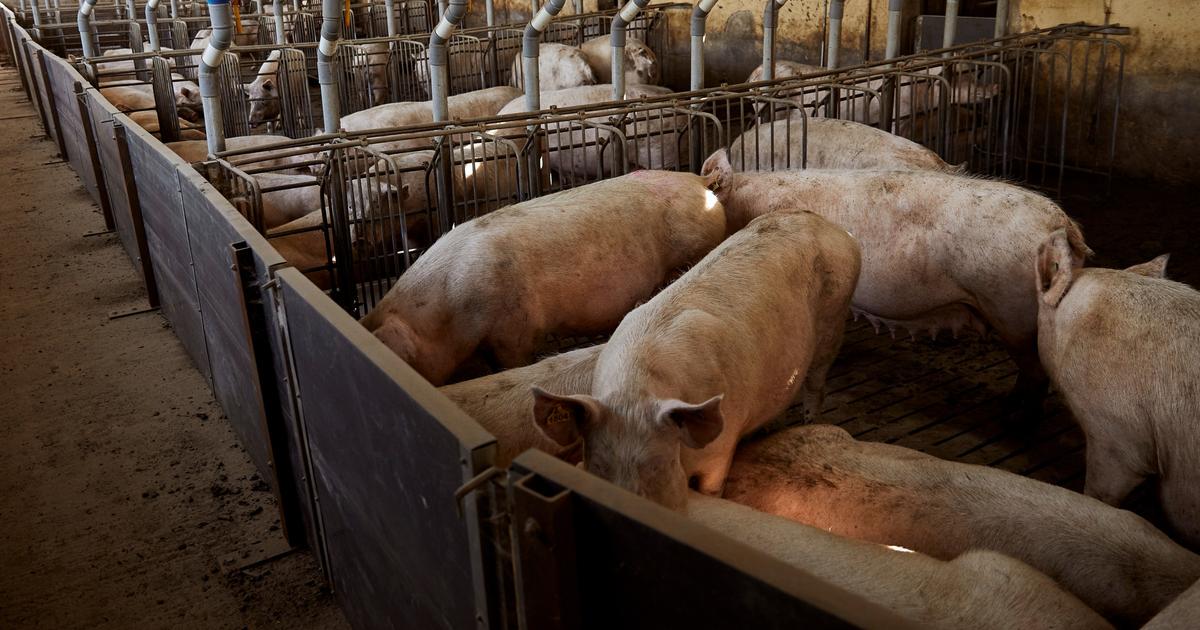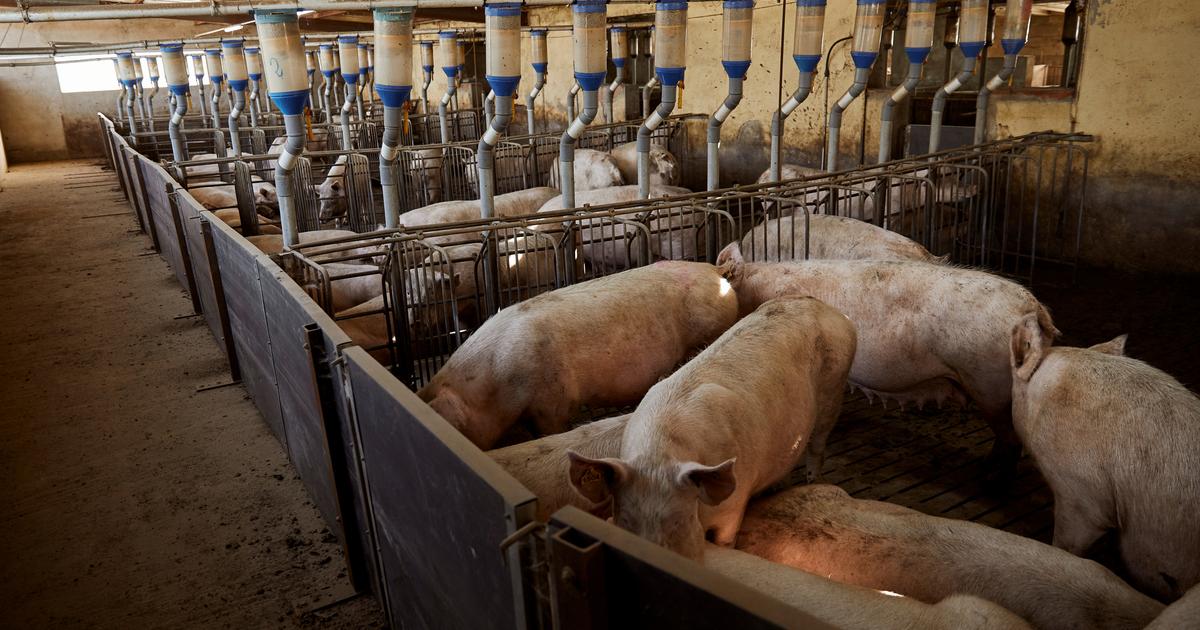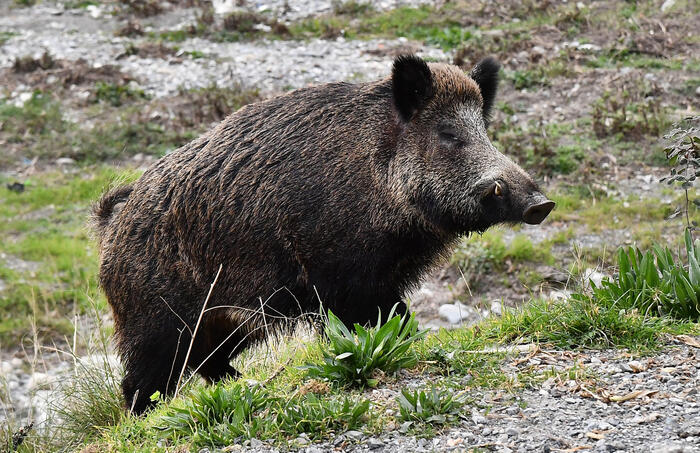Note to readers: EL PAÍS offers the Future Planet section for its daily and global informative contribution on the 2030 Agenda. If you want to support our journalism,
subscribe here.
When taking care of their guinea pigs, the peasant women of Cuculí Villa Pampilla take care of themselves.
They verified it when the coronavirus reached this community of Huarochirí, in the mountains south of Lima.
“Every day we made guinea pig soup,” says Dora Santos as she strokes one of these Andean rodents in her hatchery.
“Sometimes I called my colleagues to bring me one more, because I felt very bad and they despaired.
Perhaps that diet had to do with our recovery ”, says the person who was ill for two months.
More information
Indigenous Lessons for Sustainable Food
The global food system is down
Mango season
How to feed the world's population without depleting the planet's fresh water
For Santos and her companions, that was not the only time guinea pigs (
Cavia porcellus
) protected them. Here at the foot of arid mountains that reach 3,500 meters above sea level, the men engaged in agriculture almost exclusively and the women supported them at harvest time. Other than that, there was no other paid job for them. And even the guinea pig they raised at home was not part of the community's diet. "There was a lot of fighting here because nobody believed in guinea pigs, not even in us," recalls Santos, meanwhile, he separates the alfalfa branches to feed them. "They said we were wasting time and the husbands were waiting for us outside the shed."
Although Peru is the cradle of the largest population of guinea pigs - or guinea pigs - in South America, it is concentrated in the northern highlands of the country.
“Where there are better weather conditions, there are more specimens.
They adapt to temperate and cold climates, but as they are not tropical, they suffer in the heat and die of hyperthermia ”, explains Lilia Chauca, who has dedicated her life to researching this species and now leads the National Guinea Pig Program of the National Institute of Agrarian Innovation (INIA).
With its meat, emblematic dishes of Peruvian gastronomy are prepared such as cuy chactado - roasted under stone until it is crispy - and even derivatives such as sausages, hams and
nuggets.
The zootechnical engineer affirms that these small mammals, domesticated since before the Incas, provide food security and employment to more than 800,000 Peruvian families who went from raising for self-consumption to sale.
With its meat, emblematic dishes of Peruvian gastronomy are prepared such as cuy chactado - roasted under stone until it is crispy - and even derivatives such as sausages, hams and
nuggets
.
In 2016, the women of Cuculí Villa Pampilla created the Peruanitas Empeñosas association to harness the potential of guinea pig meat.
With that idea, they applied to the Sierra y Selva Alta project, financed by the Peruvian government and the International Fund for Agricultural Development (IFAD) for the benefit of 40,000 rural families who doubled their average income.
To get started, they bought "purest" guinea pigs of the Andean and Peruvian races, since theirs were Creoles.
"That's where the name of
Peruvians
comes from
, and we are determined because we are, we never lose heart," remarks Gisela Ramírez, president of the association.
With that impetus, they walked throughout the town and visited restaurants and markets in the capital to offer their meat.
However, they ran into various setbacks, such as the intense
coastal
El Niño
rains
that flooded this arid valley in 2017.
“It was fatal because our kennel was only lined with blankets.
We saw so many guinea pigs die that we were discouraged and there were few members left so as not to fail ”, she laments.
In Peru there are four breeds of guinea pig and their breeding benefits more than 800,000 families nationwide.Sally Jabiel
With the project, they improved the infrastructure, learned new techniques to care for and slaughter their guinea pigs, and reached more demanding markets in Lima. They were there until Peru decreed a strict quarantine to contain the pandemic. “The community was closed, no one could go in or out to buy all the animal feed. Only one truck passed every 15 days with our orders ”, recalls the president.
Unlike other hatcheries, here the guinea pigs eat a mixture of corn, alfalfa flour, soy cake and bran.
“They always ask us, 'Why is your meat different?'
The answer is that they don't eat anything chemical, ”Santos says proudly.
But faced with that lack, they began to die.
“Those who were pregnant were stressed and miscarried.
So much mortality made us sad, so we planted more alfalfa and corn that we dried to supplement them ”, he details from the farm that they fertilize with the same fertilizer as these rabbits.
At the peak of the first wave of infections, the demand for guinea pig skyrocketed
At that time, at the height of the first wave of infections, the demand for guinea pig skyrocketed. It is not that this rodent cures covid-19, but it is considered a superfood as it contains an average of 19% protein and 1.2% minerals such as iron, which exceed beef, according to the National Center for Food and Nutrition . In fact, before the pandemic, African countries like Cameroon and Kenya started breeding it to combat malnutrition. Hence, in the face of the virus, Peruvian authorities recommended its consumption to strengthen the immune system and even rehabilitate patients with covid-19.
“There was
also
a
boom
in the community. If before a week they asked us for two, now 15 ”, says Ramírez. "From now on we want to cover the high demand throughout Lima." To achieve this goal, the association last year submitted a bid to Avanzar Rural from the Peruvian government and FIDA. This initiative, included in the national recovery plan, will finance business plans for the benefit of 17,400 small producers, organized to promote innovations that allow them to reach more sophisticated markets.
Of the 125,000 soles (25,000 euros) for their business plan, the Peruanitas Empeñosas have arranged 20% and the project the remaining 80%. In addition to continuing to improve the shed, the 15 members will increase their crops that feed their rodents and will build a slaughterhouse where they will vacuum pack the meat. "We are going to do more, until we see our guinea pig in supermarkets with our logo and in this the younger members are helping us," says Santos.
For many rural women in Peru, raising this mammal is a form of independence.
This association knows that, and it does not hesitate to share its knowledge with other peasant women in the area.
"They want us to teach them to see the little ones, because the big ones already have tough meat," says Ramírez.
“And we like to teach them so that tomorrow they will also have their business.
We don't want to be left alone with knowledge ”.
The guinea pigs are fed a natural mixture of corn, alfalfa flour, soy cake and bran.
The association produces part of these inputs on its farm south of the Peruvian capital.
In the picture, Dora Santos and Gisela Ramírez Sally Jabiel
According to INIA data, throughout the country, this activity has increased female leadership in the production chain by 84%. “Guinea pig breeding has always been in the hands of women. When it became a productive activity, their self-esteem was empowered because, even if they sell one or five, now they have their own monetary income, ”says engineer Chauca, from the institute.
For Liliana Miro Quesada, IFAD program officer in Peru, despite this progress, there are other “obstacles to overcome for the full recognition of women's talents”. Although the projects of this organization apply positive discrimination - for example, in Avanzar Rural, 40% of producers must be women - there is still an imbalance in the workload. “Although it has changed in theory, not in practice. Many of them now have a double burden, as they continue to take care of their families and also their businesses ”, explains the expert. “What we are seeing is an evolution in the role of men, who begin to support them by seeing that they bring income to the house. The process is slow, but they are persistent and are conquering spaces that seemed impossible just a few years ago ”.
Indeed, with the success of the guinea pigs, their raising has become a family activity where men also get involved.
"Now they support us, they bring our pastures and also plant alfalfa because they know that we generate more income," says Santos.
"These guinea pigs really changed our lives as women and now everyone sees us differently."
FUTURE PLANET can follow on
,
and
, and subscribe
here
to our 'newsletter'
.















